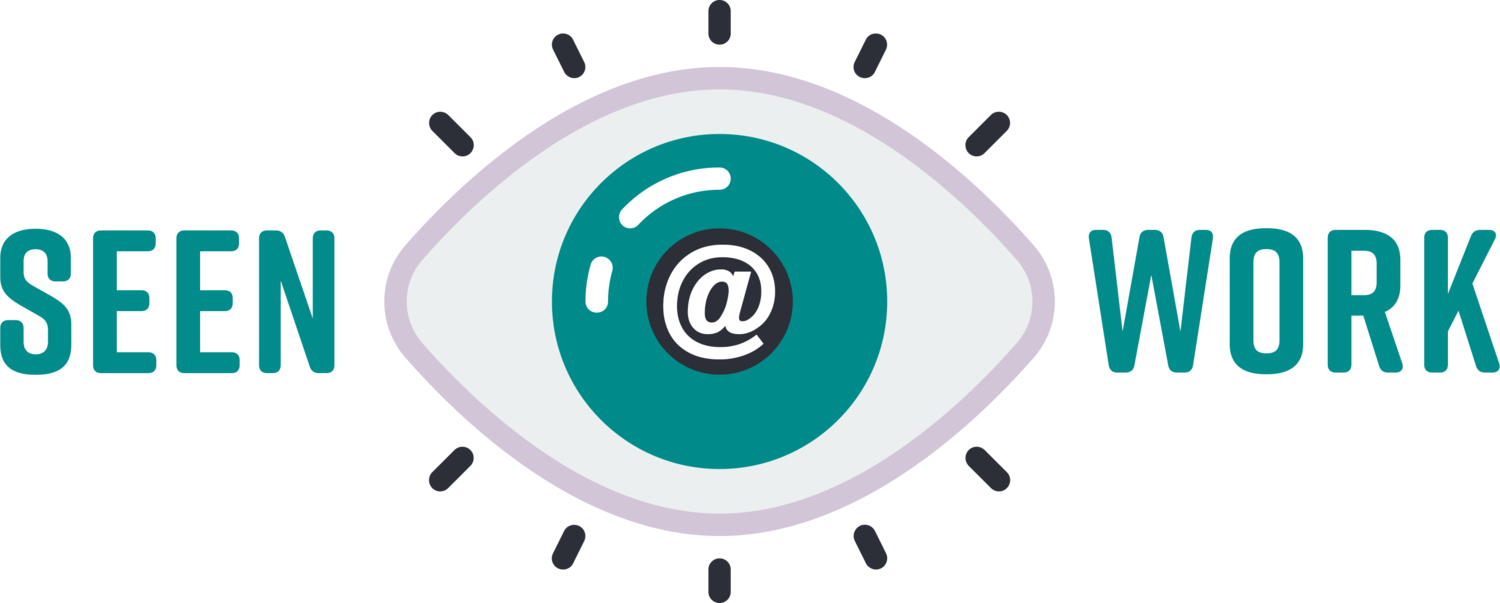The Impact of Employee Resource Groups: A Personal Reflection
If you’ve found your way to this blog, you probably are familiar with Employee Resource Groups (ERGs), sometimes called Affinity Groups or Employee Networks. For those who aren’t, a quick overview: ERGs are workplace groups created by and for people who share some identity, experience, or affiliation. Some of the most common ERGs are those formed around race/ethnicity, gender, and sexual orientation, but they also often cover other parts of who we are like disability, family/parental/caregiver status, religion, age/age group, and veteran status. In most cases, these groups engage people who share an identity and their allies in building community, providing educational opportunities, and advocating for the needs of their members.
At Seen@Work, we firmly believe in the positive impact that ERGs can have on a workplace. Research has repeatedly shown that they can be powerful drivers of things like employee engagement, feelings of inclusion, and sense of belonging, as well as business imperatives like talent recruitment, team productivity, and expanded commercial networks. It’s no wonder, then that 90% of Fortune 500 companies sponsor ERGs for their employees.
“These groups engage people who share an identity and their allies in building community, providing educational opportunities, and advocating for the needs of their members.”
Seen@Work Has Training Solutions to Help You Build an Inclusive Culture.
Schedule a Consultation today.
Today, however, I’d like to take a different approach to discussing why ERGs and Affinity Networks are so important: a reflection on what they have meant for me personally.
My first meaningful experience with ERGs came in a roundabout way. When I was applying to business school, I was made aware of an organization called Reaching Out MBA (ROMBA), a network for LGBTQ+ business school students, alumni, and ally companies. After I was selected as a ROMBA Fellow that summer, I was encouraged to go on an industry trek to learn more about potential roles after completing my degree. I had the pleasure of visiting almost a dozen globally prestigious consulting firms in their Chicago offices, where we were greeted by members and leaders of their LGBTQ+ ERGs.
In most cases, the ERG members were the reason their firms made the effort to host us. They spoke about their success in advocating for social and systemic change in their workplaces. They told stories of the friends and mentors they had found in their ERGs. They shared how colleagues in ERGs were with them in key life moments like coming out and getting married. Before this experience, I never imagined that openly queer people at a company like these would be not just tolerated, but celebrated for who they are.
“Before this experience, I never imagined that openly queer people at a company like these would be not just tolerated, but celebrated for who they are.”
Four months later, I attended the ROMBA conference for the first time. I happened to connect with many of the same LGBTQ+ ERG members who I had met that summer. I learned that the advocacy of their ERGs was the reason most of their firms sponsored the conference (and other LGBTQ+ non-profits). Those relationships led me to network their colleagues from all over the world, including some of the senior most leaders of their companies. The investment those leaders made, both in their time and the firms’ resources, clearly meant a lot to those ERG members, and to me as a prospective recruit.
These experiences with LGBTQ+ ERGs painted a clear picture of what it would be like to live both as a consultant and as my authentic self. That changed the trajectory of my education and my career.
Clearly, Employee Resource Groups have played a big part in making me the person and professional I am today. They supported my journey in learning about diversity and inclusion in the workplace; they made me believe industry leaders were living out their stated values; they let me see myself making a career change I never thought possible.
Now, I have the joy of spending my days supporting companies and DEI advocates as they work to start, sustain, and expand Employee Resource Groups. As a member of the Seen@Work consulting team, I get to advise organizations on things like ERG event strategy, governance practices, mission and vision setting, member development and mentorship, and more.
Build Community -
Retain and Engage Your Employees
Check out Seen@Work’s signature Circle program.
Schedule a Consultation today.


